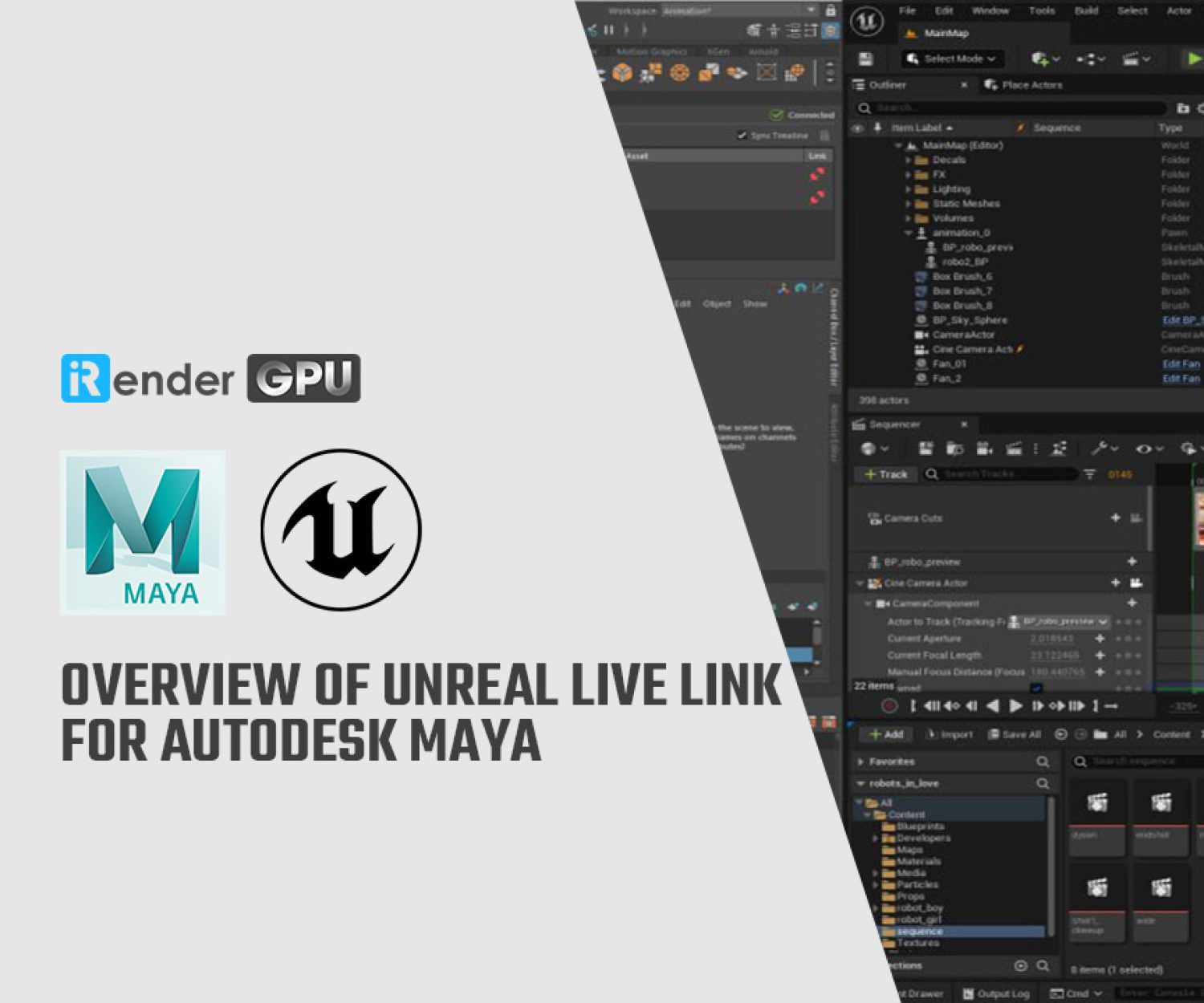Unreal Engine 5 Preview is Now Available!
Last year, Epic Games offered the Early Access with a lot of features to look forward to, so many game developers must have been eagerly awaiting a production-ready release of Unreal Engine 5. You’ll be very excited to know that Epic Game has reached the next milestone: Unreal Engine 5 is now in Preview!
Since releasing Early Access last year, the Unreal Engine group has created its technical demo The Matrix Awakens: An Unreal Engine 5 Experience with the code. Fortnite is now also built with Unreal Engine 5. These internal efforts were intended to improve Unreal Engine 5’s production readiness, stability, and optimization.
The company’s now working on the final shipping version, and all of the features they plan to include are now available for testing. In addition to many improvements to previously exposed tools like Nanite, Lumen, One File Per Actor, World Partition, and MetaSounds, users will find some exciting new animation tools, groundwork support for Large World Coordinates, and much more.
The company emphasized that Preview releases will still have issues and instability, and should not be utilized in production. If you want to explore the new tools and workflows, it is recommended to make a clone of your previous projects.
Unreal Engine 5 Early Access was focused on exposing new features for next-gen game development. With this Preview release, the company invite creators from all industries to take it for a test-drive. However, one careat, while you should be able to work in UE5 in much the same manner you did in UE4, with your existing workflows supported, several of the important new features like Lumen and Nanite have not yet been validated with non-games workflows.
Let us get to the point and dive deep into what’s new since UE5 Early Access. Though the full list of new features and improvements is extensive, here are some key highlights:
Rendering
Nanite
Nanite is UE5’s new virtualized geometry system that enables you to create games and worlds with massive amounts of geometric detail.
In this release, there have been many improvements to stability, quality, performance, and tools, including:
- Improved performance and memory usage of Nanite streaming in editor
- New error-based metric for Fallback Mesh creation (previously called Proxy Mesh)
- UX to batch convert assets to or from Nanite and perform on-disk data trimming
- Support for all view modes and usage flags, e.g. Shader Complexity view mode
- Per-instance selection
- Per-instance/Actor custom data
Lumen
Lumen is UE5’s new fully dynamic global illumination and reflections system, designed for next-generation consoles.
Since the Early Access release, there have been many stability, quality, and performance improvements, including:
- Full hardware ray tracing support, which doesn’t require distance fields or any other software tracing, and scales up to large worlds
- Improved Final Gather quality, especially visible on foliage
- Glossy reflections on translucency
- Translucency Final Gather, which improves global illumination quality on translucency
- Landscape support
Virtual Shadow Maps
This new shadow mapping method delivers consistent, high-resolution shadowing. Virtual Shadow Maps are specifically designed to work well with highly detailed film-quality Nanite assets and large, dynamically lit open worlds.
Enhancements in this release include:
- Overall stability and performance improvements
- Improved handling of shadow invalidation due to moving/deforming meshes
- Support for more non-Nanite mesh types
- Support for more material types for foliage (two-sided, subsurface)
Path Tracer
Introduced in Unreal Engine 4.27, the Path Tracer is a DXR-accelerated, physically accurate progressive rendering mode that requires no additional setup, enabling you to produce offline renderer-quality imagery right from Unreal Engine.
Preview 1 offers improvements in stability, performance, and feature completeness, including:
- Support for hair primitives
- Support for the eye shader model
- Improvements in sampling, BRDF models, light transport, supported geometries, and more
World building
World Partition
World Partition is a distance-based streaming solution. It greatly simplifies the large-world creation process by changing how levels are managed and streamed, automatically dividing the world into a grid and streaming the necessary cells.
Since Early Access, there have been a large number of improvements in stability, performance, and feature completeness, including:
- Landscape support
- Sequencer support
- New streaming source shapes
- VT support in Minimap
- Hierarchical support in Data Layers and a new UX
Animation
Control Rig
Control Rig enables you to create custom controls on your imported skeletal mesh; using these, you can generate new animations or modify existing ones within the Unreal Editor.
This release offers considerable performance improvements and many new features, including:
- Graph debugging tools that let you easily find and fix issues
- Dynamic Hierarchy and Space Switching, enabling you to attach rig controls together
- Spline tools for manipulating curves inside Control Rig
- The ability to create Functions that can be shared between Control Rigs
NEW! Distance Matching and Pose Warping
New in Preview 1, these two features combine to allow a small set of animations to work with a wide range of motions.
- Distance Matching controls the play rate of an animation so that it matches the motion of the in-game character.
- Pose Warping dynamically adjusts the pose of the animation to better match the motion of the in-game character.
NEW! Anim Blueprint Templates
This new feature enables you to create reusable animation graphs, as well as enabling engine features to be shipped as animation graph assets. With it, you can create animation Blueprint logic that isn’t bound to specific skeletons or assets. These assets cannot directly reference animation assets but instead can be reused in the context of other animation Blueprints.
NEW! IK Rig and IK Retargeter
These two new features make it easier and more efficient to animate skeletal characters in the Unreal Editor.
IK Rig enables you to interactively create solvers and goals that perform pose editing for your skeletal meshes. A common use case is to adjust a character additively while maintaining the existing animation, such as a moving character looking at a target.
IK Retargeter enables you to rapidly and robustly transfer animations between characters of different proportions across different skeletons. The retargeting can be done either at runtime or for offline creation of new animation assets.
Check out a complete list of updates on the Unreal Engine site!
iRender - Best Cloud Rendering Service Package for Unreal Engine
iRender is a GPU-Acceleration Cloud Rendering Service for Multi-GPU Rendering with Powerful Render Nodes: 2/4/6/8x RTX 3090, provides high computing performance on the model of IaaS (Infrastructure-as-a-Service). Users will remotely connect to our server, install any version of Unreal Engine only one time and easily do any intensive tasks like using their local computers.
High-end hardware configuration
- Single and Multi-GPU servers: 1/2/4/6/8x RTX 3090. NVIDIA RTX 3090 – the most powerful graphic card.
- 24 GB vRAM capacity, fitting to the heaviest images and scenes. NVLink/SLI requested for bigger vRAM.
- A RAM capacity of 128/256 GB.
- Storage (NVMe SSD): 512GB/1TB/2TB.
- Intel Xeon W-2245 or AMD Ryzen Threadripper Pro 3955WX CPU with a high clock speed of 3.90GHz.
Reasonable price
With all the outstanding advantages mentioned above, you must have found yourself the perfect choice for Unreal Engine and Unity . We provide unmatched support tailored to your specific needs and goals. SPECIAL OFFER for this Feb: Get 20% BONUS for all newly registered users. Let’s CHECK IT OUT!
For more advice and support, please do not hesitate to reach us via Whatsapp: +(84) 915875500. Register an ACCOUNT today and get FREE COUPON to experience our service.
Thank you & Happy Rendering!
Source: unrealengine.com
Related Posts
The latest creative news from Unreal Engine Cloud rendering.












